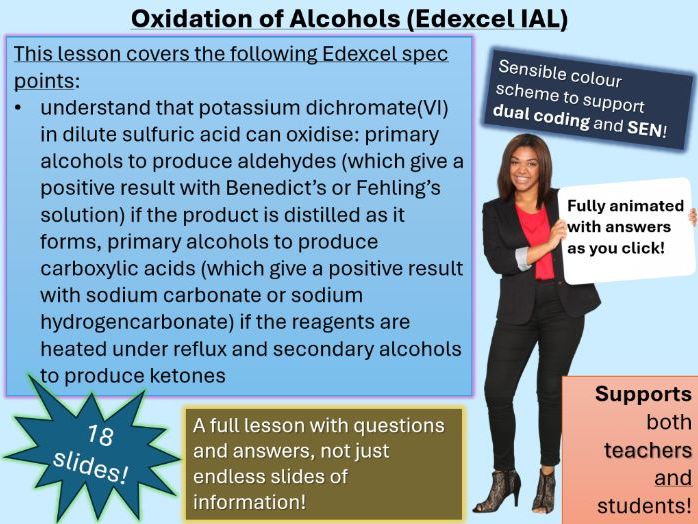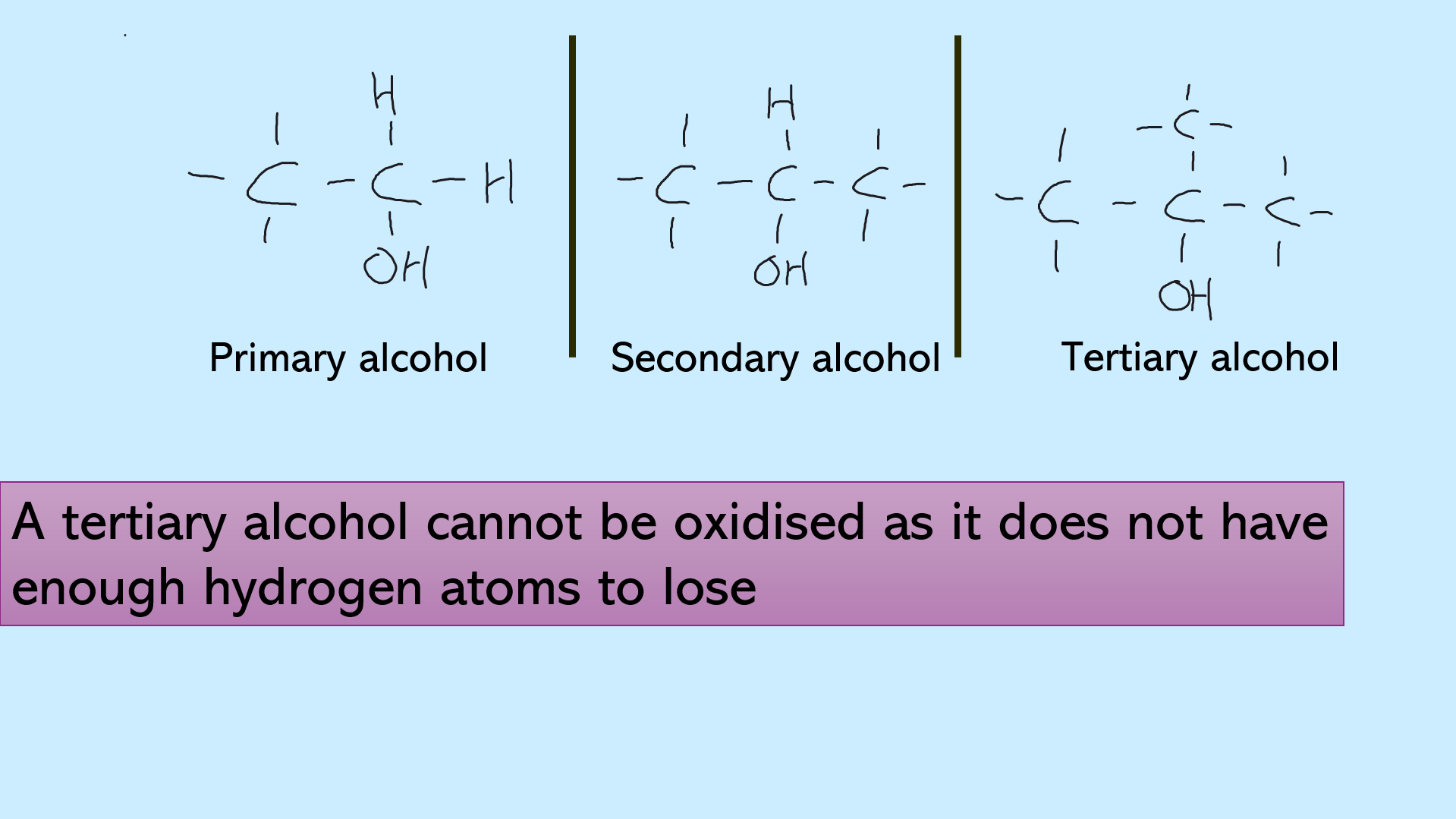

What is reflux and distillation? What is distillation with addition? What is Fehling’s and Benedict’s solution test for aldehydes? Why can’t tertiary alcohols be oxidised? All this and more covered in this comprehensive lesson with questions and answers! This is a Year 12 A level lesson for Edexcel International Unit 2 – WCH12, but it can also be used for all UK exam boards. All the slides in this lesson are fully animated and include answers to every mini plenary question and exam question. The breakdown of the slides (which are best opened on Microsoft PowerPoint) is as follows:
Slide 1 - Title and 5-minute starter. The starter is a grid of four questions entitled ‘last week, last lesson, today’s learning and future learning’. Use this generic slide for all of your lessons by simply changing the questions and the answers each time.
Slide 2 - Lesson objectives (see thumbnail image)
Slide 3 – explanation of what happens when an alcohol is oxidised in terms of loss of hydrogen
Slide 4 – Explanation of why a tertiary alcohol cannot be oxidised
Slides 5 – 7: Oxidation of primary alcohols, including equation and conditions, reagents and explanation of the colour changes that occur
Slides 8 – 10: Oxidation of secondary alcohols, including equation and products. Slide 10 explains how Fehling’s and Benedict’s solution can be used to test for aldehydes
Slide 11 – 13: labelled diagrams of the apparatus needed for heat under reflux and distillation with addition. Print slides 12 – 13 for students to glue copies of the diagram into their book
Slide 14 – detailed notes on heating under reflux
Slide 15 – detailed notes on distillation with addition
Slides 16 – 18: ALT (Applied Learning Task): a series of questions to test students’ understanding of the lesson. Answers animate on to the screen when you click. Print slides 17 – 18 so that students can have the questions in front of them. The ALT includes: Comparing dehydration vs oxidation of butan-1-ol; exploring oxidisability of C₄H₉OH isomers and a challenge on naming and drawing products of oxidation
Learning outcomes:
-
Identify and compare oxidation reactions of primary, secondary, and tertiary alcohols
-
Understand how to test for aldehydes, ketones, and carboxylic acids
-
Distinguish between reflux and distillation with addition
-
Apply knowledge to structural isomers and exam-style challenges
If this lesson saves you planning time or helps your students grasp a tricky concept, please consider leaving a positive review. Your feedback helps Lifeboat Teachers continue to support time-poor educators!
Something went wrong, please try again later.
This resource hasn't been reviewed yet
To ensure quality for our reviews, only customers who have purchased this resource can review it
to let us know if it violates our terms and conditions.
Our customer service team will review your report and will be in touch.